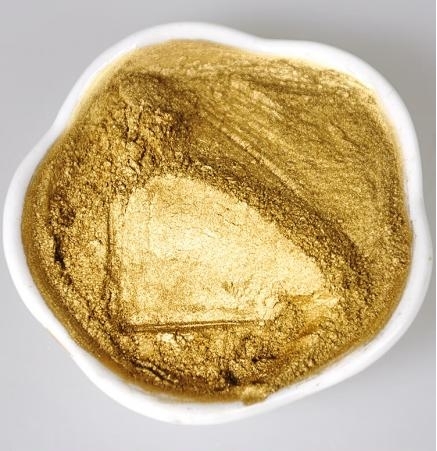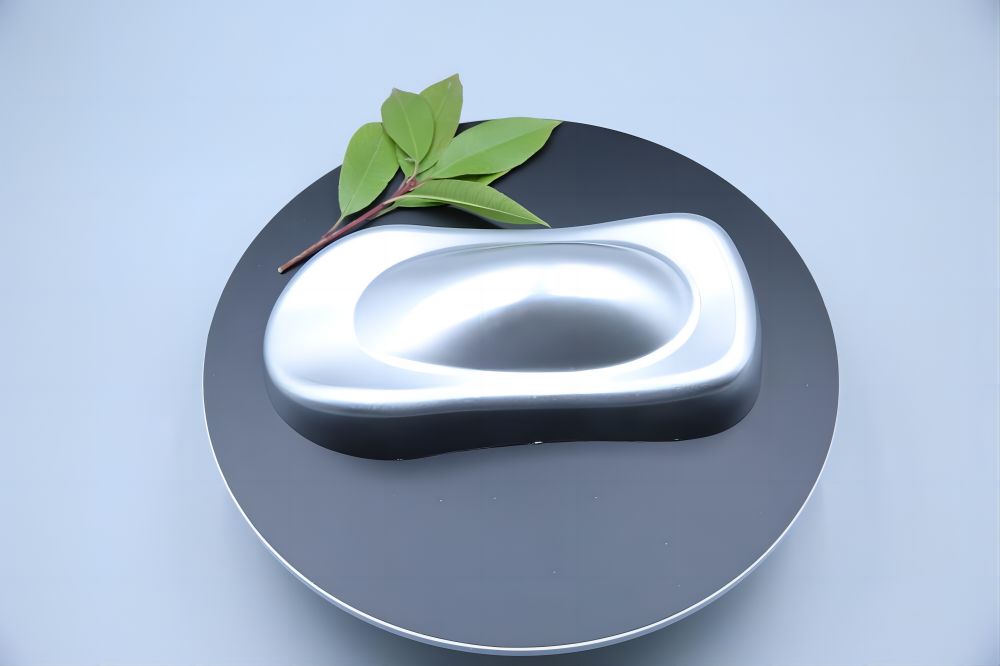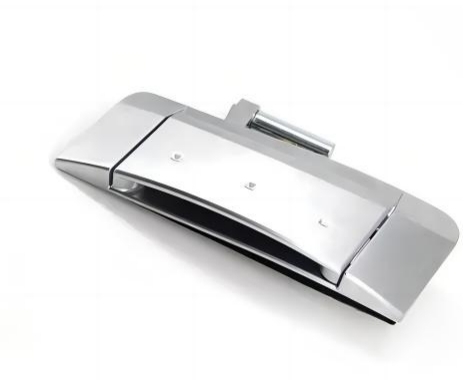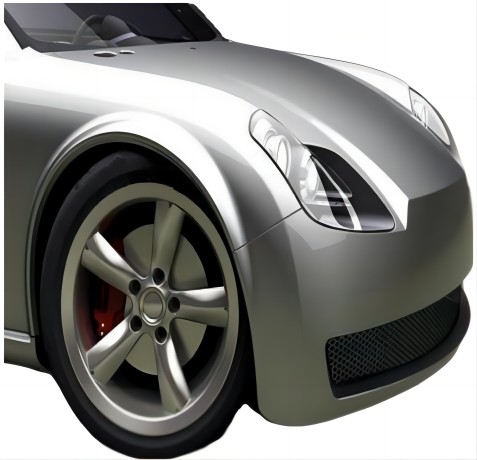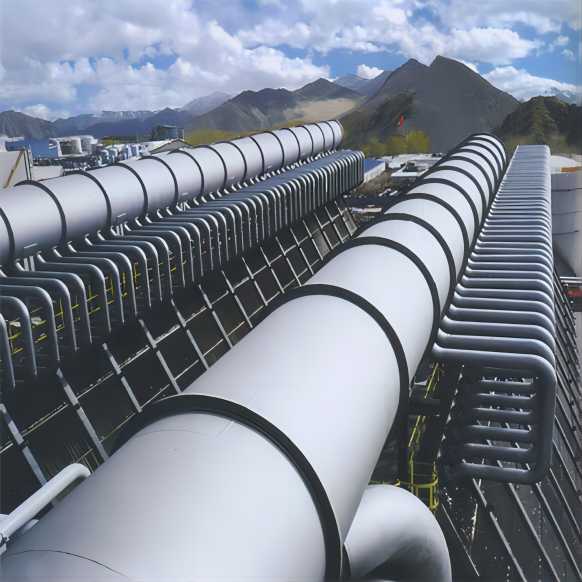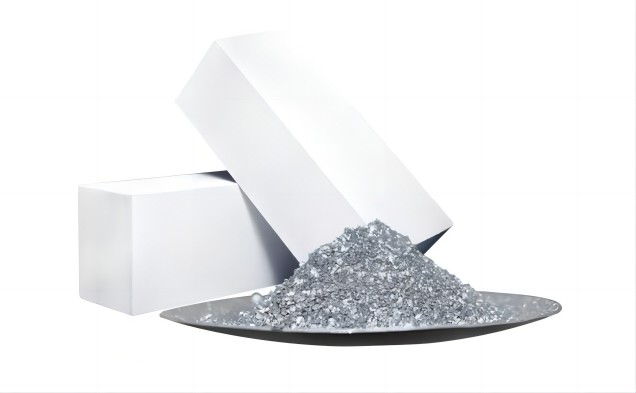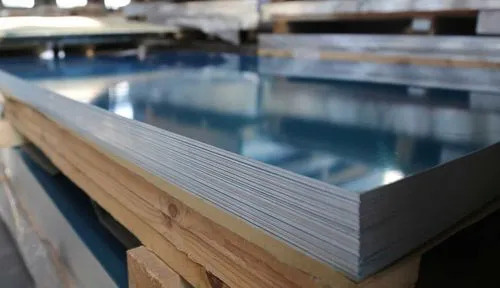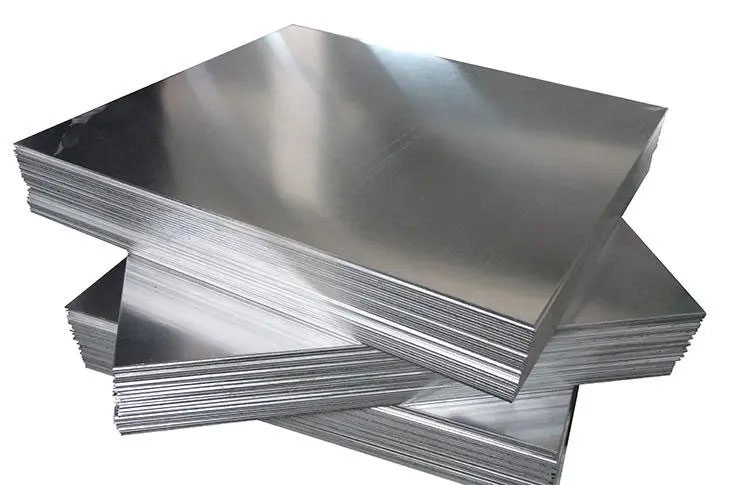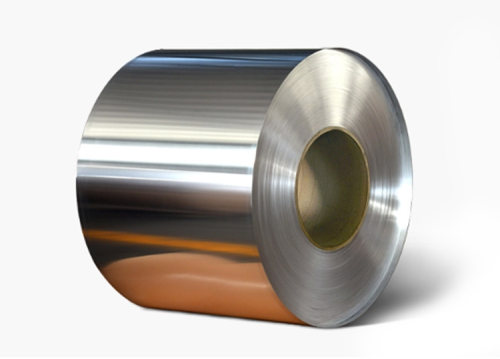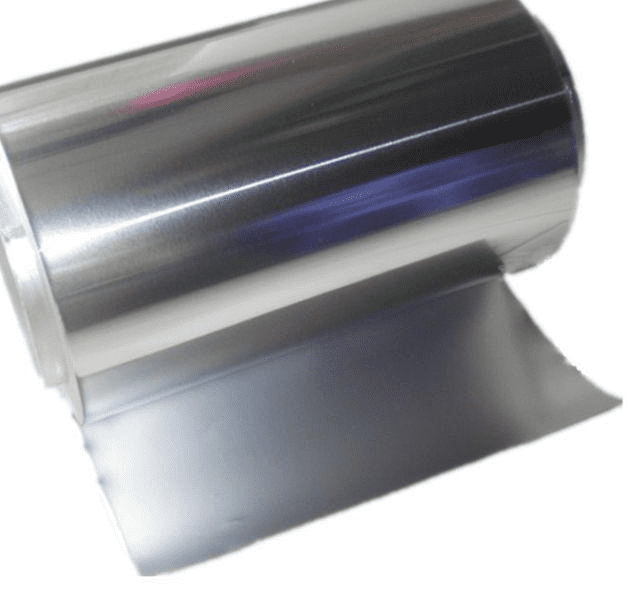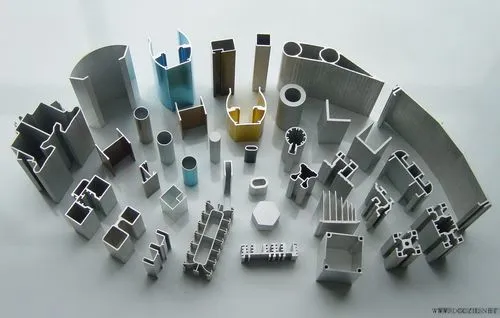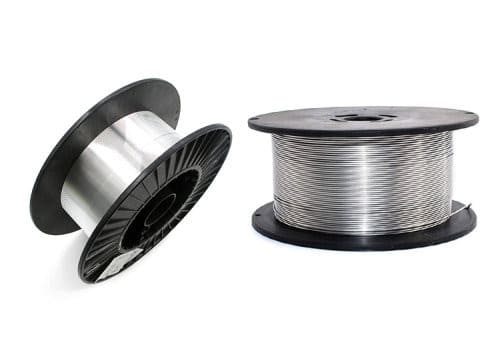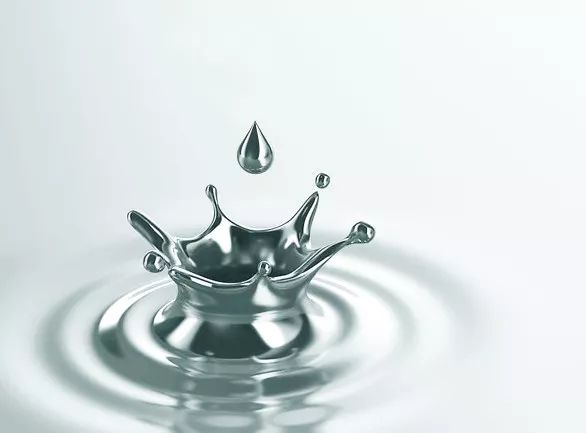
Aluminum Paste
Aluminum paste, a versatile blend of finely ground aluminum particles, solvents, and additives, shines as an indispensable material across diverse industries. Its unique properties, a dazzling interplay of metallic aesthetics and functional prowess, make it a star performer.
From the automotive industry, where it lends a sleek metallic finish, to electronics, where its electrical conductivity keeps things buzzing, aluminum paste’s applications are as wide-ranging as they are impactful. Its exceptional thermal conductivity makes it a thermal management hero, cooling down applications in solar energy, construction, and even packaging. Whether it’s adding a touch of glitz to a car or ensuring the smooth flow of electrons in your phone, aluminum paste is quietly working behind the scenes, proving its indispensability in a world that demands both beauty and functionality.
Types of Aluminum Paste
Aluminum paste is a versatile material with various formulations tailored to meet specific requirements in different industries. The formulations are designed to optimize properties such as reflectivity, electrical conductivity, and adhesion, making aluminum paste suitable for a wide range of applications. There are many kinds of aluminum paste in the market according to different requirements. Here are our main products of aluminum paste:
The preparation of aluminum paste involves a meticulous process that begins with the selection of high-quality aluminum flakes or powders. These raw materials are subjected to a milling process, where mechanical forces are applied to break down the aluminum particles into smaller sizes. This step is crucial because the particle size and distribution significantly influence the final properties of the aluminum paste. Proper particle size ensures good adhesion, smooth application, and desired reflective properties.
After milling, the aluminum particles are blended with a medium, normally a solvent or a resin binder, to create a paste-like consistency that can be easily applied. Additives may be needed to enhance qualities such as adhesion, conductivity, or stability. Then the aluminum paste can be utilized in various applications, ranging from decorative finishes to functional coatings. Essentially, the meticulous production process and control of particle size and distribution are key in ensuring aluminum paste exhibits the desired properties for its intended applications.
Package, Storage, and Transportation Guide
1. Package: Metal drum of good integrity with plastic inline. NW: 25 kgs per drum.
2. Storage:
- Keep the drum tightly sealed;
- Store in a cool, dry place;
- Keep away from heat and direct sunlight;
- Avoid dust;
- Ensure good interior ventilation;
- Aluminum paste may become dry after a long time of storage. Do re-test the product before using it to avoid loss.
3. Transportation: Handle gently; avoid violent collision.
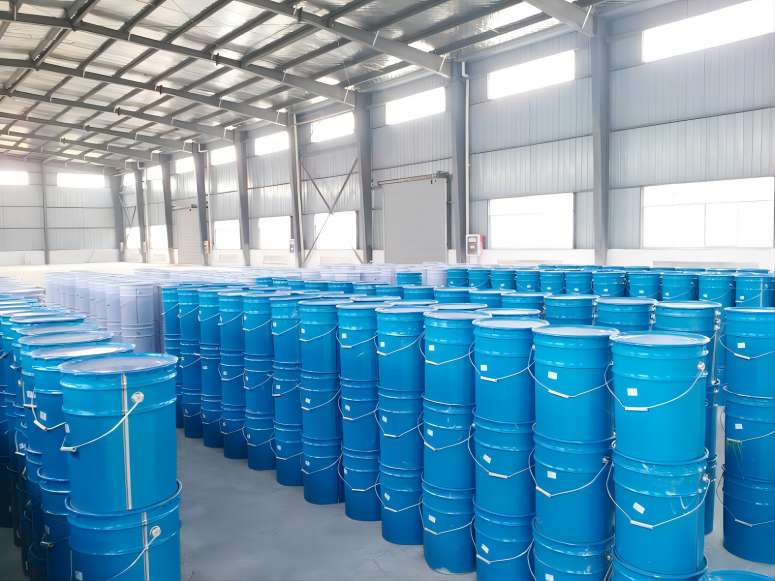
Rigorous And Perfect Quality Assurance System
Our company has passed the ISO9001 quality system, ISO14001 environment system, and ISO45001 occupational health system management certification. We always abide by and fulfill the requirements of product quality management, implementing the policy of “quality first, TQM, continuous improvement, customer satisfaction”, and strictly controlling the stability of product quality. Our products have been tested by SGS International Standard Company and meet the requirements of various international standards.
Pioneering and innovative R&D center
Our R&D center has been devoted to studying the production technology of high decorative aluminum paste. After studying and analyzing the advanced technology from foreign countries, our R&D center innovatively developed high decorative metal pigment production technology, process, and equipment by trying present high-tech technologies, such as fine milling, mineral process grading, and surface treatment, in combination.
We have a high-quality technical team with a strong technical background, has abundant strength in research and development. We have established long-term cooperation with the Chinese Academy of Sciences, Shanghai Jiao Tong University, Hefei University of Technology, and Huaibei Normal University. The company’s R&D center has 12 engineers, including 4 senior engineers. The R&D center consists of a grinding research center, a surface treatment center, a particle size testing center, and technology application laboratories.
While providing stable products, we also provide customers with innovative and professional technical services. Through the technology application laboratory, we can work with our customers to develop new coating products to provide more timely, flexible, and market-oriented solutions.
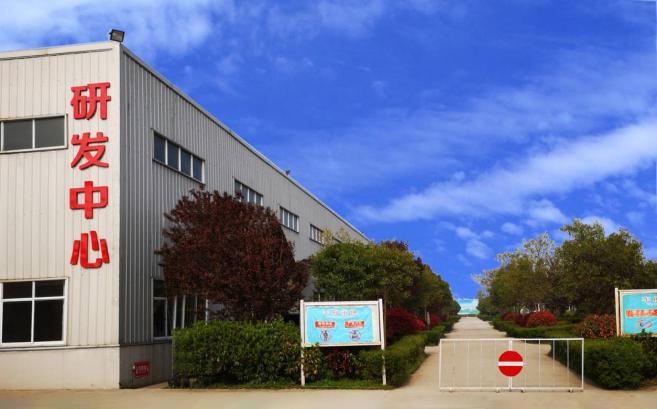
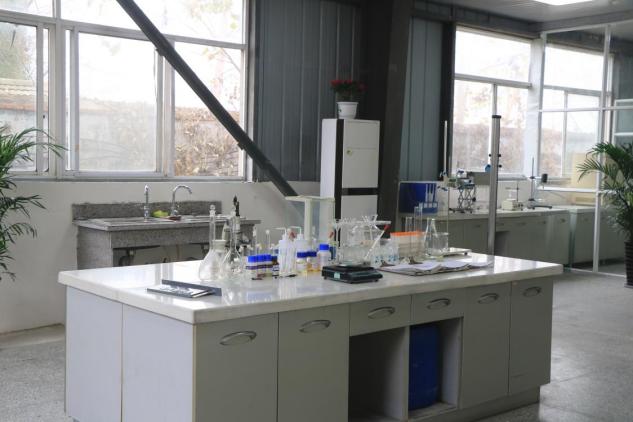
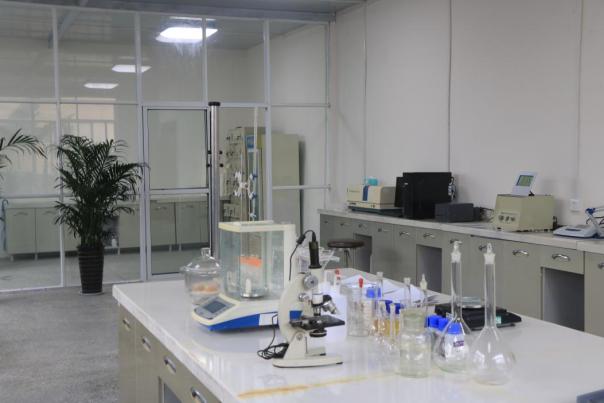
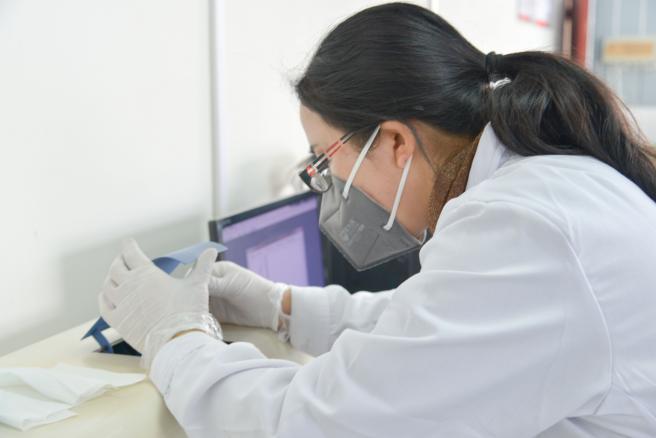
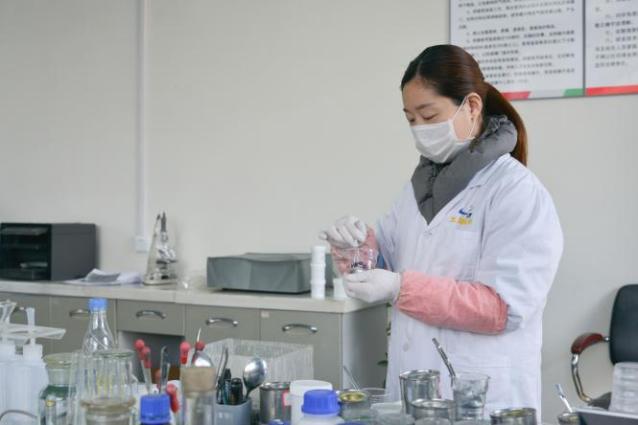
Our Partners
As the country’s leading manufacturer of aluminum paste, we have more than 300 partners, including a number of fortune 500 companies and large domestic companies.
In line with the principle of quality first, we always provide customers with high-quality and scientific solutions.
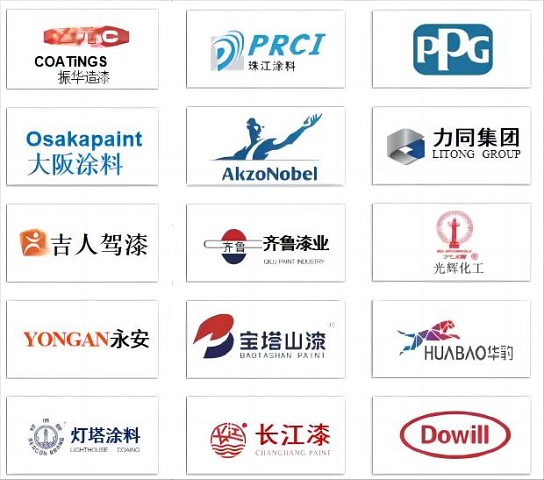
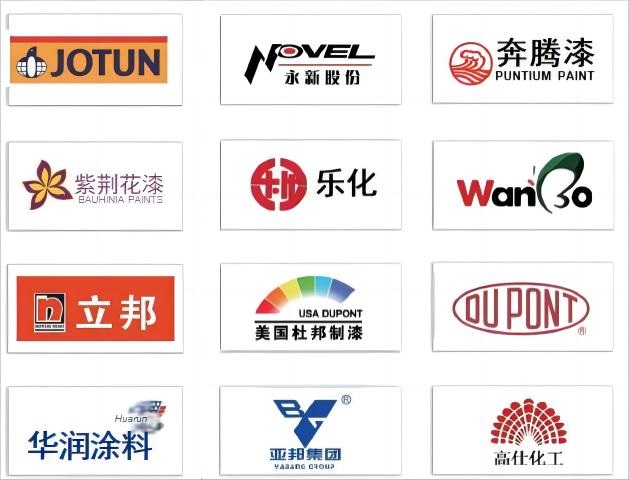
The Order Process of Aluminum Paste

Preparation and Current Analysis of DEG Aluminum Paste (Slurry/Powder)
Chapter 1: Overview of Aluminum Paste (Slurry)/Powder
1.1 Definition of aluminum paste (slurry)/powder for gas filling
Aluminum aerated paste (slurry)/powder is a specialized gas-generating additive used in the production of autoclaved aerated concrete (AAC, Autoclaved Aerated Concrete). Its main component is aluminum powder, supplemented with other additives. This material reacts with water to produce hydrogen gas, which forms numerous tiny bubbles within the concrete. This characteristic makes aluminum aerated paste (slurry)/powder play a crucial role in the building materials industry, especially under the increasingly stringent requirements for lightweight, high-strength, and thermal insulation properties in modern construction.
The chemical reaction of aerated aluminum paste (slurry)/powder can be vividly compared to bread fermentation. In bread making, baking powder reacts with water to produce carbon dioxide gas, causing the dough to expand and become soft; similarly, in the production of aerated concrete, aerated aluminum paste reacts with water to produce hydrogen gas, forming bubbles that reduce the density of the concrete, achieving a lightweight effect. This bubble structure not only reduces the weight of buildings but also significantly enhances their thermal insulation and soundproofing performance.
The performance of aerated aluminum paste (slurry)/powder is closely related to its composition, the characteristics of aluminum powder, and the ratio of additives. High-quality aluminum powder typically has a smaller particle size, good dispersibility, and high activity, allowing it to react more effectively with water, producing uniform and stable bubble structures. Conversely, low-quality aluminum powder can lead to uneven bubble formation, affecting the final performance of the concrete. Therefore, when selecting aerated aluminum paste (slurry)/powder, the choice of raw materials and control of production processes are crucial.
In addition to aluminum powder, other additives are often added to aerated aluminum paste (slurry) to enhance its reactivity and overall performance. For example, the introduction of compounds such as DEG (glycerol alcohol) not only increases the reaction rate of aluminum powder but also improves the workability and stability of the final product. The ratio and application methods of these additives have a profound impact on the quality and performance of the aluminum paste (slurry).
In summary, aerated aluminum paste (slurry)/powder is an indispensable part of modern building materials. In the context of the global construction industry’s growing pursuit of lightweight, efficient, and environmentally friendly products, the demand for aerated aluminum paste (slurry)/powder continues to rise. With the continuous development of related technologies, its production processes and application scope are also expanding, contributing to the advancement of the construction industry towards greener and more sustainable directions.
1.2 Main components of aluminum paste (slurry)/powder for gas filling
The main components of aluminum paste (paste)/powder include aluminum powder and a variety of additives, which together determine its performance and application effect. Before understanding these components, it is necessary to first recognize the key role of aluminum powder in the process of gas generation.
1. Aluminum powder
Aluminum powder is one of the core components of aerated aluminum paste (slurry)/powder, typically existing in flake or spherical form. Its particle size, thickness, and activity directly impact the quality of aerated concrete. When aluminum powder reacts with water, it releases hydrogen gas, forming bubbles that are locked during the hardening process of the concrete, thus creating aerated concrete blocks with excellent thermal insulation and lightweight properties. The selection of aluminum powder is crucial; high-quality aluminum powder should have a smaller particle size and good activity to ensure uniform distribution of bubbles.
2. Additives
In addition to aluminum powder, additives play a crucial role in aerated aluminum paste (slurry). Commonly used additives include DEG (glycerol), water, and other chemical additives. DEG can effectively increase the reaction rate of aluminum powder, enhancing its affinity with water, thus accelerating hydrogen production. Moreover, the use of additives can improve the flowability and stability of the aluminum paste, making it easier to handle and transport during production.
3. Other ingredients
In some cases, in order to enhance the characteristics of the product, manufacturers may also add other chemicals, such as preservatives and thickeners. These ingredients help improve the storage stability of aluminum paste (paste) and prevent stratification or deterioration during storage and transportation.
1.3 Functions of aluminum paste (slurry)/powder for gas filling
Aluminum paste (paste)/powder as an important additive in the modern construction industry, has a variety of key functions, these functions not only affect the production process of aerated concrete, but also directly determine the performance and application effect of the final product.
1. Promote bubble formation
The primary function of aerated aluminum paste (slurry)/powder is to produce hydrogen through chemical reactions with water, thereby forming numerous tiny bubbles in the concrete. The formation of these bubbles is the fundamental reason for the lightweight characteristics of aerated concrete. Not only do these bubbles reduce the density of the concrete, but they also enhance the overall structural integrity, making the final concrete blocks lighter and easier to construct.
2. Improve compressive strength
Although aerated concrete has a lower density, high-quality aerated aluminum paste (slurry)/powder can effectively enhance the compressive strength of concrete. This is because the activity of aluminum powder and its reasonable pore structure ensure a uniform internal structure, preventing weak points and cracks. Therefore, using high-quality aerated aluminum paste (slurry)/powder ensures that the resulting concrete blocks maintain good strength performance when bearing loads.
3. Optimize thermal conductivity
Aluminum foam (paste/powder) bubbles effectively reduce thermal conductivity, giving aerated concrete excellent insulation properties. This characteristic is crucial for building energy efficiency, helping to reduce energy consumption and enhance living comfort. Moreover, good thermal insulation means that aerated concrete can effectively maintain indoor warmth in winter and coolness in summer, thereby reducing the use of air conditioning and heating, further conserving energy.
4. Enhance sound insulation
The pore structure produced by aerated aluminum paste (paste)/powder also gives aerated concrete a good sound insulation effect. This makes aerated concrete an ideal choice for urban housing and office buildings, which can effectively reduce external noise interference and improve the comfort of indoor environment.
Chapter 2: Global Market Status
As the global construction industry continues to develop, the demand for lightweight, high-strength building materials is increasing, and aerated aluminum paste (slurry)/powder, as a key additive in aerated concrete, is experiencing rapid market expansion. This chapter will delve into the scale of the global aerated aluminum paste (slurry)/powder market, major market distribution, market trends, and competitive landscape.
2.1 Global scale of gas-added aluminum paste (slurry)/ powder market
According to market research institute statistics, the global gas aluminum paste (paste)/powder market has shown steady growth in the past few years. It is expected that by 2025, the market size will reach billions of dollars, with an annual growth rate of about 5%. This growth is mainly driven by the following factors:
1. Construction industry recovery: The global construction industry is gradually recovering after the reconstruction and increase in infrastructure projects following the COVID-19 pandemic. In particular, in Asia and Europe, increased government investment in infrastructure has further boosted demand for aerated concrete and its additives.
2. Increasing demand for green building materials: With the improvement of environmental awareness, the development and use of lightweight, energy-saving and environmentally friendly building materials has become an important direction for the development of the industry. Aerated aluminum paste (paste)/powder is gradually replacing traditional building materials due to its good thermal insulation and sound insulation performance.
3. Technological Progress: Improvements in production processes and the development of new materials have significantly enhanced the performance of aerated aluminum paste (slurry)/powder, thereby strengthening its market competitiveness. These technological advancements not only improve product quality but also reduce production costs, making more construction companies willing to adopt aerated concrete.
2.2 Main market distribution
The global gas-filled aluminum paste (slurry)/powder market presents a diversified geographical distribution, mainly concentrated in the following regions:
1. European Market: The European region is the primary market for aerated aluminum paste (slurry)/powder, with Germany, France, and the UK leading the way. European countries are at the forefront in the technological research and application of building materials, particularly in their focus on environmentally friendly and sustainable building materials, which has led to an increasing use of aerated concrete. Additionally, regulations in many European countries encourage the use of lightweight and efficient building materials, further driving the demand for aerated aluminum paste (slurry)/powder.
2. Asia-Pacific Region: The Asia-Pacific region is the fastest-growing area in the global aerated aluminum paste (slurry)/powder market, particularly in countries like China and India. China, with its massive infrastructure development and urbanization, has become one of the largest aerated concrete markets globally. As energy efficiency requirements for buildings increase, it is expected that demand for aerated aluminum paste (slurry)/powder in this region will continue to grow over the next few years.
3. North America: The United States and Canada are the major markets in North America, where aluminum paste (paste)/powder is increasingly recognized in residential and commercial buildings. Market participants are actively seeking innovative solutions to improve building energy efficiency and reduce carbon emissions.
4. Latin America and the Middle East: Although these markets are relatively small, demand for aerated aluminum paste (paste)/powder is rising as economies develop and infrastructure investment increases, particularly in countries such as Brazil, Argentina and the United Arab Emirates.
2.3 Market Trends
In the global gas-filled aluminum paste (paste)/powder market, the following trends are worth paying attention to:
1. Sustainable Development: As global attention to environmental protection and sustainability grows, more and more construction companies are opting for eco-friendly aerated aluminum paste (slurry)/powder in their material selection. Companies are developing greener production processes to reduce energy consumption and waste emissions during the manufacturing phase. At the same time, the trend of using recyclable materials such as recycled aluminum is also on the rise.
2. Technological Innovation: While technological advancements drive market growth, they also enhance product performance and application scope. The development of new aluminum powders, improvements in production processes, and optimization of additives have all led to more superior properties of aerated aluminum paste (slurry)/powder in concrete production, such as better compressive strength, lower thermal conductivity, and higher reactivity.
3. Increased Market Concentration: As market competition intensifies, mergers and acquisitions within the industry are on the rise. Large companies expand their market share and R&D capabilities by acquiring smaller manufacturers, thereby boosting industry concentration. Such consolidations not only facilitate resource integration but also provide new impetus for technological innovation and market expansion.
2.4 Competitive pattern
The global competitive market for gasified aluminum paste (paste)/powder is intense, and the main players include but are not limited to the following companies:
1. Carlfors Brur (Sweden): As an industry pioneer, Carlfors Brur is known for its high quality aluminum powder and additives and has long held an important position in the aerated aluminum paste (paste) market.
2. Benda-Lutz (Austria): This company focuses on the research and development and production of aluminum powder, which is known for its high quality and high activity and is widely used in the aerated concrete industry.
3. Eckart (Germany): Eckart has gained a good reputation in the global market with its modern production facilities and strict quality control process, covering a wide range of aluminum powders and their applications.
4. AlDoro (Brazil): As an important player in the South American market, AlDoro is committed to providing cost-effective gasified aluminum paste (paste), which is widely popular in the local market.
5. Mepcop (India): Mepcop is emerging in the Indian market, winning market share with low prices and quality services, and gradually becoming an important player in the Asia-Pacific region.
6. China: Domestically, waste aluminum foil is commonly used in conjunction with water to make aerated water paste. Due to its lower cost, this paste has a certain price advantage; however, its quality often falls short of expectations. During production, most of the waste aluminum foil undergoes only simple crushing, resulting in aluminum flakes that are coarse and lack sufficient activity. Such raw materials are typically used to manufacture relatively rough aerated concrete bricks.
Moreover, this aerated concrete water paste poses significant risks during transportation and storage. Due to the instability of its internal components, it is prone to bloating reactions, which can even lead to safety issues such as overheating and fire. This undoubtedly causes great inconvenience for the use and storage of the product. Compared to similar products in Europe, China indeed has a certain gap in preparation technology in this field, a gap that could be measured in decades.
Chapter 3: Production Process
The production process of aerated aluminum paste (paste)/powder is the key link that determines its final product quality and performance. This chapter will introduce in detail the production process, key technologies, and control points of each link of aerated aluminum paste (paste)/powder, to help readers better understand the manufacturing process of this important material.
3.1 Production process
1. Raw material preparation
Before production begins, the selection and preparation of raw materials are crucial. The main raw materials include aluminum powder, additives (such as DEG, dispersants, etc.), and other ingredients. The choice of aluminum powder is typically based on its particle size, activity, and purity. Highly active aluminum powder can produce more hydrogen when reacting with water, thus achieving better foaming effects. The selection of additives should consider their role in the aerated aluminum paste, such as improving fluidity and enhancing reactivity.
2. mixing
Prepare the aluminum powder and additives in a certain ratio. In this step, efficient mixing equipment is typically used to ensure uniform distribution of all components and prevent agglomeration. During mixing, strictly control the time and speed to ensure thorough combination of aluminum powder and additives, laying a solid foundation for subsequent reactions.
3. Grinding and classification
The mixed material needs to be ground to achieve the specified particle size. This step is crucial for enhancing the activity of aluminum powder. Using a ball mill or other types of grinding equipment can effectively reduce the particle size, increase the surface area of the aluminum powder, thereby enhancing its reactivity with water. After grinding, the material must also undergo classification to ensure consistency in particle size and distribution.
4. Preparation of ointment
In this step, the ground aluminum powder is mixed with water and other necessary additives to form an aluminum paste. The reaction conditions (such as temperature and stirring speed) must be controlled to ensure that the aluminum powder reacts fully with water, generating a stable bubble structure. Through proper mixing ratios and stirring, good foaming effects and flowability can be achieved.
5. Storage and packaging
The prepared aerated aluminum paste (slurry) should be stored and transported under controlled environmental conditions to avoid high temperatures and moisture, which can prevent premature reactions leading to failure. During storage, regularly check its physical and chemical properties to ensure product quality stability. Finally, the aluminum paste must be packaged according to standards to ensure no leakage or deterioration during transportation.
3.2 Key technologies
In the production process of aluminum paste (paste)/powder, there are several key technologies that have a profound impact on the performance and quality of the final product:
1. Ball milling technology
Ball milling is an important technology for aluminum powder grinding. Through the physical grinding process, the particle size of aluminum powder can be effectively reduced and its specific surface area can be improved. The smaller particle size helps to enhance the reactivity of aluminum powder, so that it can produce hydrogen more quickly when reacting with water, thus forming uniform and stable bubble structure.
2. Grading technology
Grading technology plays a crucial role in ensuring the consistency of aluminum powder particle size distribution. Through grading, different particle sizes of aluminum powder can be separated, enhancing the material’s activity and adaptability. An appropriate particle size distribution can optimize bubble formation, improving the strength and thermal insulation performance of aerated concrete.
3. Reaction control technology
In the preparation of aluminum paste, it is very important to control the reaction conditions (such as temperature and time). Reasonable reaction conditions can ensure that the reaction between aluminum powder and water is sufficient, resulting in a sufficient number of bubbles with uniform distribution. The application of reaction control technology can help improve the stability and consistency of the product.
4. Formula optimization technology
By continuously optimizing the aluminum paste (slurry) formula, product performance can be improved. For example, adding certain additives in appropriate amounts can increase the reaction rate of aluminum powder and enhance the flowability and stability of the aluminum paste. Furthermore, companies can develop various types of aluminum pastes to meet diverse market demands.
5. Environmental control technology
In the production process, control of environmental conditions (such as temperature and humidity) is also crucial to ensure product quality. Especially in the storage and transportation stage, it is necessary to ensure that the environmental conditions are suitable to prevent aluminum paste from failing or deteriorating due to environmental changes.
3.3 Quality control
In the whole production process, quality control is an important link to ensure the stable performance of aerated aluminum paste (paste)/powder. Enterprises usually establish a complete quality management system, including:
1. Raw material testing
Before production begins, all raw materials must pass strict quality testing to ensure that they meet production standards. The activity, purity and particle size distribution of aluminum powder need to be tested to determine whether they meet production requirements.
2. Process monitoring
In the production process, parameters of each link (such as temperature, humidity, mixing time, etc.) are monitored in real time to ensure that the production process is always in the best state. In addition, online detection equipment can be used to find problems and make adjustments in time to prevent the production of unqualified products.
3. Finished product testing
After the production of products, the finished products need to be tested for comprehensive performance, including fluidity, gas generation, compressive strength and other indicators, so as to ensure that they meet relevant standards and customer needs. Only products that have passed strict testing can be put into market sales.
Chapter 4: Product Classification and Application Field
Aluminum aerated paste (slurry)/powder has become an important material in the construction industry due to its unique properties and diverse applications. In this chapter, we will delve into the main product categories of aluminum aerated paste (slurry)/powder and their application fields, helping readers better understand the specific uses and advantages of this material in practical engineering.
4.1 Product classification
1. Type of aluminum powder
According to the morphology and characteristics of aluminum powder, aerated aluminum paste (paste)/powder can be divided into a variety of types:
- Sheet aluminum powder: This kind of aluminum powder exists in the form of thin sheets, with large specific surface area and high reactivity. It is often used in aluminum paste formula with higher gas output requirements.
- Spherical aluminum powder: Due to its more uniform particle shape, spherical aluminum powder can improve the fluidity and is suitable for aluminum paste products with high fluidity requirements.
- Nano aluminum powder: In recent years, the application of nano technology has made nano aluminum powder gradually enter the market. Its ultra-high specific surface area and stronger reactivity make it perform well in specific applications.
2. Type of additives
There are many kinds of additives used in aluminum paste (paste), which can be classified according to their functions:
- Reaction accelerator: such as diethylene glycol (DEG) and other additives, which can help improve the reaction rate of aluminum powder and water and enhance the effect of gas generation.
- Dispersant: used to improve the fluidity and stability of aluminum paste, prevent aluminum powder from precipitating in the paste.
- Stabilizer: Ensure the stability of aluminum paste in storage and transportation to avoid premature reaction.
3. Functional products
According to specific performance requirements, aerated aluminum paste (paste)/powder can also be customized into different functional products:
- High thermal insulation aluminum paste: for low temperature environment or buildings that need high thermal insulation performance, specific expansive agents are added to improve its thermal insulation effect.
- Fireproof aluminum paste: Add fireproof materials to improve the fireproof performance of concrete, suitable for building projects with strict fire protection requirements.
- Crack-resistant aluminum paste: In order to prevent cracks in concrete during construction or use, crack-resistant agents are added to enhance its crack resistance.
4.2 Introduction to the preparation and product types of our products
Our DEG products are jointly developed and produced by China University of Science and Technology, Hefei University of Technology. We are dedicated to providing high-quality aerated aluminum paste (slurry)/powder, primarily used in the production of autoclaved aerated concrete (AAC). Through advanced manufacturing processes and stringent quality control, our products have reached European standards, meeting the high requirements of the international market.
1. Product preparation process
The preparation process of our products is complex and fine, using high purity spherical aluminum powder as the main raw material to ensure the high activity and excellent performance of the products. The specific product preparation process includes the following key steps:
- Grinding powder: At this stage, we use ball mill to grind aluminum powder to control the particle size and activity of the powder. By adjusting the grinding time and speed, we can precisely control the particle size to ensure that the aluminum powder reaches the required fineness and dispersion.
- Graded powder: The ground powder needs to be classified to concentrate the particle size distribution. The classification process ensures that each particle size of aluminum powder has an appropriate proportion in the final product, thus maintaining consistency in the size and distribution of each air cell in the final aerated concrete block. This step is crucial for enhancing the strength and durability of the brick.
- Prepare DEG aluminum paste: At this stage, we will mix the graded aluminum powder with specific additives to prepare aluminum paste. The preparation process of aluminum paste involves special treatment of aluminum powder to improve its performance and reactivity, ensuring that it performs best in subsequent concrete production.
- Paste mixing: Finally, we mix the prepared aluminum paste with other components. This step aims to ensure consistency in the composition and performance of each batch of aluminum paste, reducing variations between batches. Precise control of this process ensures the stability and reliability of the product.
2. Product type analysis
Aluminum paste (slurry)/powder of different types are classified according to their solid content, active aluminum content, bulk density, medium particle size, etc., to meet various application requirements, especially in autoclaved aerated concrete (AAC). The following is a detailed analysis of the two types of products: aluminum paste (slurry) and aluminum powder, along with their applicability.
① Aluminum paste/slurry type
| product name | Solid content | activated aluminium | stacking density | Medium particle size | compliant AAC |
| DEG200 | 70% | 96 | 0.15 | 45-47 | <600 |
| DEG400 | 70% | 94 | 0.15 | 33-35 | <500 |
| DEG600 | 70% | 94 | 0.15 | 25-27 | <400 |
| DEG800 | 70% | 92 | 0.11 | 17-19 | <350 |
Product feature analysis
Solid content: The solid content of all aluminum paste/paste is 70%, which ensures that it can maintain good fluidity and reactivity in the production process.
- Active aluminum content: The active aluminum content decreases slightly with the increase of product number, and DEG200 has the highest active aluminum content (96%), suitable for applications requiring higher reactivity.
- Bulk density: DEG200 and DEG400 have high bulk density (0.15), which ensures the stability and uniformity in the mixing process to a certain extent. DEG800 has the lowest bulk density (0.11), which is suitable for applications with low density requirements.
- Medium particle size: Medium particle size decreases with the increase of product number, DEG200 has the largest medium particle size (45-47), suitable for occasions that require larger bubbles and higher gas output. On the contrary, DEG800 has the smallest medium particle size (17-19), suitable for applications that require fine foam.
② Type of aluminum powder
| product name | Solid content | activated aluminium | Water coverability | Medium particle size | compliant AAC |
| Aluminum powder 200 | 97% | 96 | 15000 | 45-47 | <600 |
| Aluminum powder 400 | 97% | 94 | 15000 | 33-35 | <500 |
| Aluminum powder 600 | 97% | 94 | 18000 | 25-27 | <400 |
| Aluminum powder 800 | 97% | 92 | 20000 | 17-19 | <350 |
Product feature analysis
- Solid content: The solid content of aluminum powder is high, all 97%, which makes aluminum powder can produce hydrogen more effectively in the reaction, improve the gas generation.
- Active aluminum content: The active aluminum content of aluminum powder also decreases slightly with the increase of the number. The active aluminum content of aluminum powder 200 is the highest (96%), which is suitable for applications requiring higher reaction rate.
- Water coverage: The water coverage of aluminum powder increases with the increase of product number, from 15000 (aluminum powder 200) to 20000 (aluminum powder 800), which means that higher coverage can effectively promote gas generation and improve gas generation effect.
- Medium particle size: Medium particle size also decreases with the increase of the number. The medium particle size of aluminum powder 200 is the largest (45-47), which is suitable for occasions requiring larger bubbles, while the medium particle size of aluminum powder 800 is the smallest (17-19), which is suitable for applications requiring higher foam fineness.
3. Summary of applicability
AAC Application: Whether it is aluminum paste (slurry) or aluminum powder, the product selection should be reasonably configured according to specific AAC requirements. Products with higher active aluminum content and solid content (such as DEG200 and aluminum powder 200) are suitable for building materials that require rapid reaction and high gas generation. On the other hand, products with lower medium particle size (such as DEG800 and aluminum powder 800) are more suitable for applications with special requirements for fineness.
4.3 Application areas
The wide application of aluminum paste (paste)/powder is mainly concentrated in the following fields:
1. Construction industry
The construction industry is the largest application market for aerated aluminum paste (paste)/powder, mainly used for:
- Manufacturing of aerated concrete: As a lightweight building material, aerated concrete is widely used in walls, roofs and floors and other structures. Its light weight, high strength and good thermal insulation performance make it an indispensable material in modern buildings.
- Partition wall and decoration: The use of aerated concrete bricks can improve the sound insulation and thermal insulation performance of interior and exterior walls, which is suitable for partition wall construction in residential, commercial and public buildings.
2. Infrastructure construction
In the field of infrastructure construction, the application of gasified aluminum paste (paste)/powder is also not to be underestimated, mainly reflected in:
- Roads and Bridges: In the construction of roads and Bridges, aerated concrete is used as filler or structural material. Its light weight can effectively reduce the self-weight of the structure and improve the safety and durability of the project.
- Tunnels and underground projects: The excellent waterproof and fireproof properties of aerated concrete make it widely used in tunnels and underground buildings.
3. Prefabricated components
With the development of prefabricated building technology, the application of aerated aluminum paste (paste)/powder in prefabricated components is increasing day by day, mainly including:
- Prefabricated wall panels and floor slabs: The production of aerated concrete prefabricated components can shorten the construction period, improve the construction efficiency, and ensure the consistency of product quality.
- Prefabricated buildings: In prefabricated buildings, components produced by aerated aluminum paste (paste)/powder can be assembled quickly and reduce the difficulty of on-site construction.
4. Industrial buildings
The application of aluminum paste (paste)/powder in industrial buildings is increasing gradually, mainly manifested in:
- Factory and warehouse construction: Due to its excellent thermal insulation and sound insulation performance, the application of aerated concrete in industrial plants and warehouses helps to create a good working environment and improve energy efficiency.
- Equipment foundation: In some industrial buildings with high seismic resistance and fire protection requirements, aerated concrete is often used in the construction of equipment foundation.
5. Decoration and art
With the improvement of people’s living standards, the application of aerated aluminum paste (paste)/powder has gradually expanded to the decorative field, mainly including:
- Art design: Because of its easy processing and carving, many works of art and ornaments began to use aerated concrete materials, giving them unique artistic effects.
- Interior decoration: As a wall material, aerated concrete not only has good decorative effect, but also can meet the needs of modern living for environmental protection and comfort.
4.4 Market prospects
1. Growth in market demand
With the acceleration of global urbanization and the recovery of the construction industry, the market demand for aerated aluminum paste (paste)/powder is expected to continue to grow. Especially in the Asia-Pacific region, due to the rapid advancement of infrastructure construction and real estate development, the application prospects of aerated aluminum paste (paste)/powder are broad.
2. Technological progress promotes it
The progress of science and technology will further promote the performance improvement and application scope expansion of aerated aluminum paste (paste)/powder. The research and development of new materials and new processes will enable aerated aluminum paste (paste)/powder to be applied under higher performance standards, meeting the market demand for high-quality building materials.
Chapter 5: Future Development Trends
With the continuous development of the construction industry and the progress of technology, the market prospect and application field of aerated aluminum paste (paste)/powder will usher in many changes. The future development trend is mainly reflected in the following aspects:
1. Technological innovation and product upgrading
① Research and development of new materials
As technology advances, the development of new aluminum powders and additives will continue to emerge. These new materials will have higher reactivity and better performance, thereby enhancing the overall quality of aerated aluminum paste (slurry)/powder. For example, the application of nano-aluminum powder can significantly increase the specific surface area of aluminum powder, making it more reactive in reactions.
② Improvement of production process
In the future, the production process of aluminum paste (slurry)/powder will become more automated and intelligent. By introducing advanced equipment and smart control systems, companies can better manage production parameters, thereby improving product consistency and stability. Moreover, process optimization will also reduce energy consumption and production costs, enhancing market competitiveness.
2. Promotion of green buildings
① Sustainable development concept
As the world places greater emphasis on environmental protection, the demand for green building materials is growing. Aerated aluminum paste (slurry)/powder, as an eco-friendly building material, aligns with the concept of sustainable development. In the future, more construction projects will prioritize the use of aerated aluminum paste (slurry)/powder to meet energy-saving and environmental protection requirements.
② Strengthening environmental regulations
Environmental regulations on building materials will be gradually strengthened by governments, and enterprises need to meet higher standards. Manufacturers of aerated aluminum paste (paste)/powder should improve their production process, reduce waste and emissions, and enhance their competitiveness while complying with environmental laws.
3. Diversification of market demand
① Increased demand for customized products
As the construction industry diversifies, customers’ demand for personalized products is also increasing. Manufacturers of aerated aluminum paste (slurry)/powder will need to provide customized solutions based on the characteristics of different building projects. For example, they should develop adaptable aerated aluminum paste (slurry)/powder products tailored to specific climate conditions and building uses.
② Expansion of new application fields
In addition to the traditional construction industry, aerated aluminum paste (slurry)/powder will gradually penetrate other industries such as transportation and environmental protection projects. With continuous technological advancements and diversified market demands, the application areas of aerated aluminum paste will continue to expand. Companies need to actively explore emerging markets and seek new growth points.
4. Internationalization trend
① Expansion of global markets
With the acceleration of internationalization, enterprises will have the opportunity to enter the global market, especially in developing countries, where there is a strong demand for infrastructure construction. Gasified aluminum paste (paste)/powder, as a lightweight and environmentally friendly building material, will play an important role in these markets.
② International cooperation and exchange
In the future, companies within the industry will place greater emphasis on international cooperation and exchange. Through technical collaboration, resource sharing, and market expansion, companies can achieve complementary strengths and enhance their competitiveness. At the same time, international cooperation will also promote the unification of industry standards and joint technological advancement.
5. Industry integration and standardization
① Intensified market competition
As the market continues to expand, competition within the industry will intensify further. Companies need to enhance product quality, optimize services, and strengthen brand building to cope with competitive pressure. The survival of the fittest in the market will lead some small enterprises to exit, thus driving industry consolidation.
② Standardization and standardization
As the industry develops, countries and regions will gradually establish and improve relevant technical standards and quality specifications. Manufacturers of aluminum paste (slurry)/powder for gasification need to strictly adhere to these standards to ensure product quality and market credibility. The implementation of standardization will promote the development of the industry and enhance overall competitiveness.

